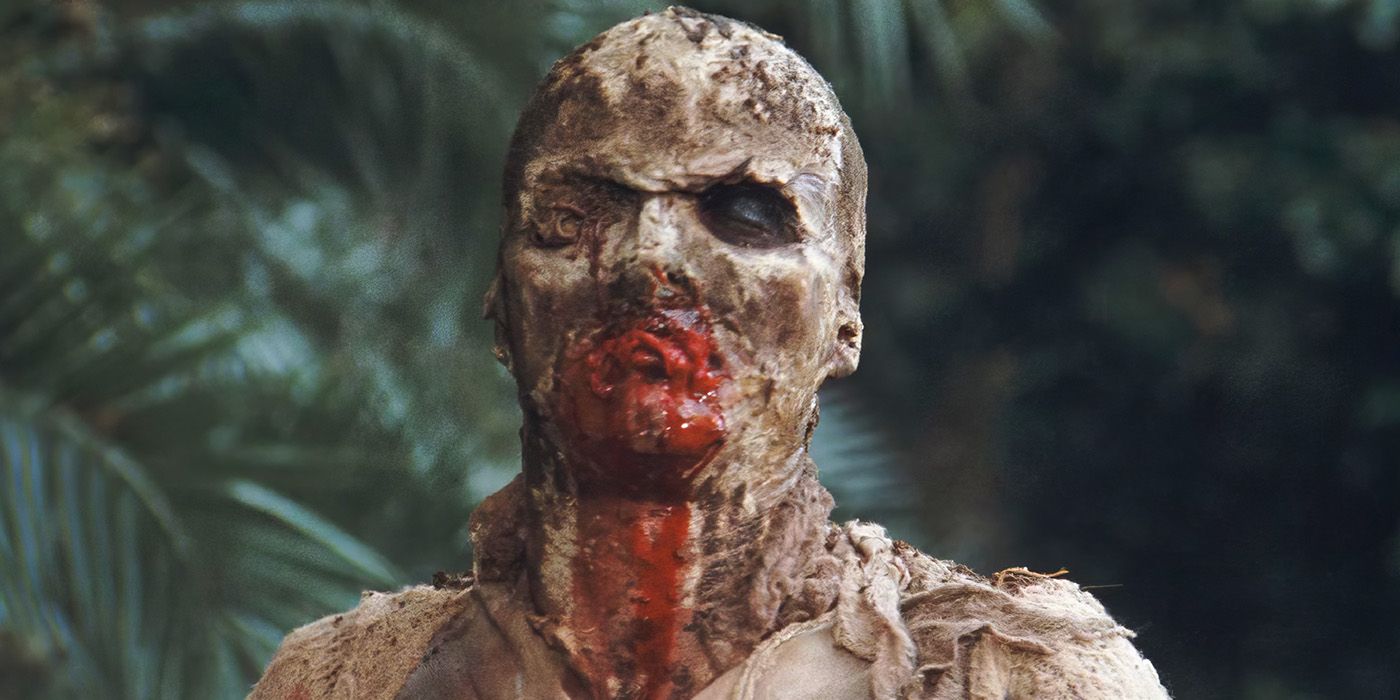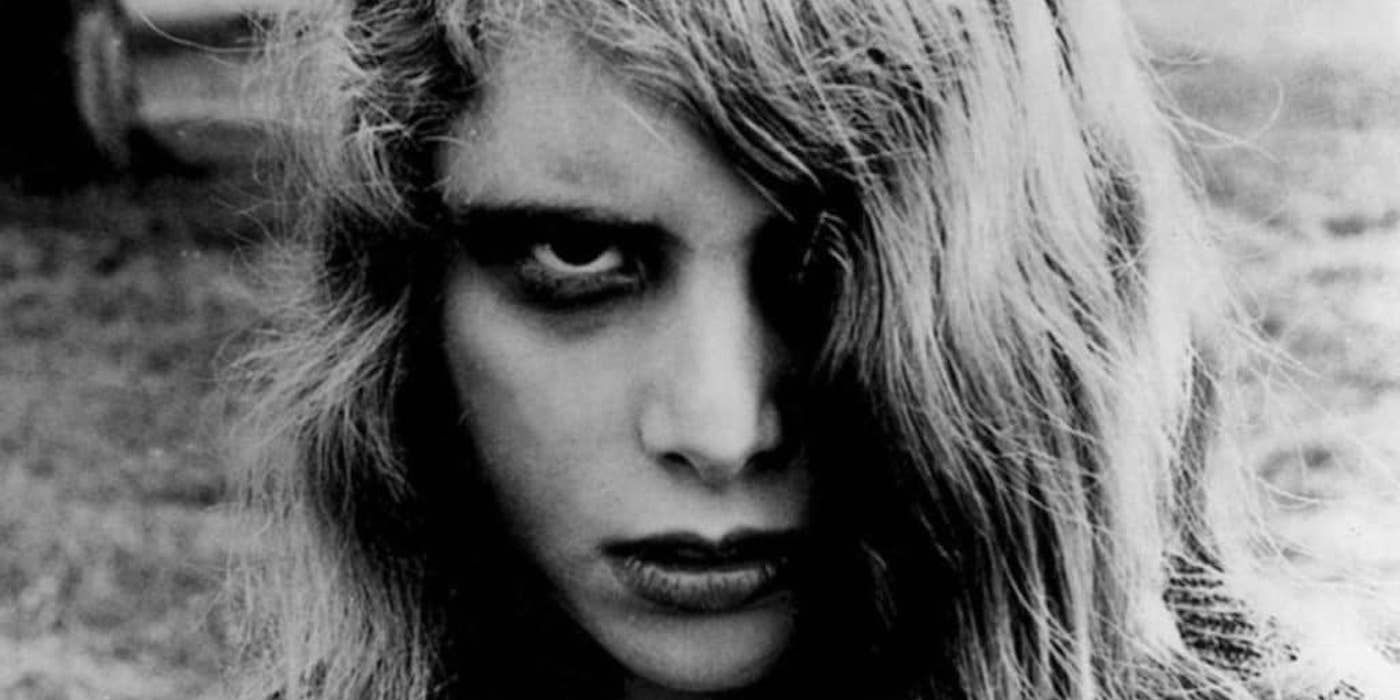In 1978, George A. Romero‘s classic Dawn of the Dead, re-edited by Dario Argento, was released in Italy under the title Zombie. Immediately, an unofficial Italian sequel went into development. The resulting film that came out a year later was also originally titled Zombie, but the number was added to avoid confusion with Romero’s movie, turning it into Zombi 2 (also known as Zombie Flesh Eaters in the UK). This 1979 horror would probably have ended up being forgotten if not for its director, Lucio Fulci. A horror auteur in his own right who had already made a name for himself by that time with several iconic Giallo films filled with stylized violence and unabashed gore, Fulci wasn’t interested in merely following in Romero’s footsteps, creating something truly special instead. Surrealism is this unique director’s aesthetic domain, and the radically graphic gore is his cinematic language. The zombies become a perfect symbol of Fulci’s favorite topics, as the world that has been decaying at the seams for a while.
What Is ‘Zombi 2’ About?
Like in many other Fulci’s works of the late ’70s and 1980s, the plot isn’t very significant in Zombi 2. When a mysterious boat drifts into New York harbor carrying a lone zombie onboard, Anne (Tisa Farrow of Winter Kills and Fingers fame), the daughter of the boat’s owner, becomes concerned about her scientist father’s fate and sets out to go to Matool, a Caribbean island where he currently resides. She is accompanied by a journalist, Peter (Ian McCulloch), whose boss (played by Fulci himself) senses a potentially interesting story there. At the same time, on the island, a zombie outbreak is underway, with a local doctor, Menard (Richard Johnson, who previously played a scientist with questionable methods in Robert Wise‘s The Haunting), trying to find a cure, or at least understand the nature of this macabre epidemic.
The characters also don’t matter all that much in the film, as they are mostly here to die in a variety of gory ways (including, of course, Fulci’s trademark gouging of the eyes that’s featured in many of his best works). Zombies do matter, though, as they become a vehicle for Fulci to come up with some of the most iconic imagery in his career, including but not limited to an epic battle between a zombie and a shark. Unlike Romero, Fulci and his frequent collaborator, screenwriter Dardano Sacchetti, don’t view zombies as social metaphors. Instead, the living dead in this film, and in future Fulci’s works that will feature zombies, are the ultimate representation of the inherent evil of human nature that always finds a way to manifest itself and take shape.
This Zombie Horror Has Vivid Moments of Graphic Gore, But That’s Not What Makes the Film So Memorable
Where Romero and many of his spiritual followers tend to offer at least some kind of rational or realistic explanation for a zombie outbreak, Fulci isn’t interested in the logic of common reality. In fact, the inability to come up with anything rational in this regard, not even some version of the line about there not being enough room in hell, is at the core of Fulci’s misanthropic worldview in Zombi 2. In many of the Italian classic’s best works, there is a character who is a self-proclaimed man of science or at least someone who is accustomed to relying on facts. A doctor, like in The Beyond, or a police detective, like in The Black Cat; a person who desperately tries to hold on to their version of reality, even when it’s crumbling under their feet.
In Zombi 2, Dr. Menard is one such pivotal character, a person who cannot fathom the locals’ belief that a voodoo curse is causing the dead to rise from their graves. In this sense, he takes after a whole tradition of stubborn scientists in books and films who tend to explore the world around them in all the wrong ways. In the notes for the film’s 2012 DVD edition, Sacchetti confirms that The Island of Doctor Moreau in particular was a major inspiration for the script, including the main location that plays a crucial role in setting up an almost apocalyptic atmosphere that dominates the film. In fact, this would become one of Fulci’s signature moves in the ’80s, especially in his Gates of Hell trilogy: turning sunlit, seemingly tranquil locations into surreal nightmares, the scenes of dread incarnate. That’s what makes this zombie horror, as well as many other Fulci’s works, so special: it is never just about the violence, the gore, and the entertainment value. It’s the sense of the profound wrongness of reality and the ways humans exist in it that drive most of his films, along with zombies and other supernatural entities.
Fulci’s trademark style supports this grim vision of the world with uncomfortable close-ups and abrupt cuts that create a disorienting effect of being trapped with the characters inside the broken reality, as well as a very distinctive musical score, composed by another one of Fulci’s frequent collaborators, Fabio Frizzi. Italian horror of the ’70s has an interesting relationship with music in general: notably, the Italian version of Dawn of the Dead, re-edited by Argento, featured a soundtrack by his favorite band, Goblin, which gave it a very different feel from Romero’s original film. The score in Zombi 2 is deceptively aloof, almost lighthearted, which doesn’t really change even when the apocalypse stops being implied and becomes quite real in the now iconic finale, where zombies roam the Brooklyn Bridge.
For all of its graphic imagery, the underlying theme of Zombi 2 is about subtlety — one with which the gates of hell open, with no one willing to pay attention. Fulci set out and managed to do an art horror, while the producers mostly saw it as a way to quickly capitalize on the Dawn of the Dead success. Ironically, while both goals were achieved, the producer’s wish came about more easily, with Zombie 2 becoming a massive commercial hit and inspiring its own series of sequels. The critical response was mixed, though, as was often the case with Fulci’s works. In retrospect, the very things Fulci was criticized for — the excessive gore, the sparse narrative, zombies serving as reminders of the grim imperfections of the world — would become the reasons this movie would be re-evaluated and gain a cult following. These days, Zombie 2 isn’t compared to Romero’s film because of the producers’ ambitions, but because these are two equally great works of macabre art.

- Release Date
-
August 25, 1979
- Runtime
-
91 minutes
- Director
-
Lucio Fulci
-

-

-

Richard Johnson
Dr. David Menard
-

Olga Karlatos
Paola Menard


